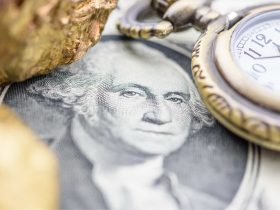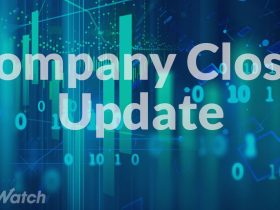Key takeaways
- July’s PCE headline and core inflation both ticked higher but in line with analyst predictions
- Investors are increasingly confident of a pause in interest rates from the Fed in September
- The three major markets were mixed at the data set, with more jobs stats to come on Friday
It’s that time of the month again: the inflation reports are coming out thick and fast, with the PCE inflation results the next in line. They revealed pretty much what economists and Wall Street analysts expected, with core inflation edging slightly higher and further cementing the view that inflation will be hard to tackle at this stage.
What happens next with interest rates? As always, it’s a delicate balancing act between helping and harming the economy for the Federal Reserve. With the markets again choosing to look at the bright side, it was a solid stock trading day. Here’s the latest.
In a world where inflation looms large, securing your portfolio is paramount. Q.ai’s Inflation Protection Kit offers a smart selection of inflation-resistant assets, including TIPS, commodities and precious metals, to help cushion against market turbulence.
With our AI engine crunching numbers and analyzing trends, you can rest assured that the Kit’s allocation remains optimized to weather the storms of inflation. It’s not just about preserving capital; it’s about helping your investments thrive, even when living costs increase.
Download Q.ai today for access to AI-powered investment strategies.
What did the PCE inflation report say?
The personal consumption expenditure (PCE) price index, which is the Fed’s preferred measure of inflation, reflected an inflationary environment fueled by resilient consumer spending. July’s core inflation score, excluding volatile food and energy prices, rose 4.2% annually compared to 4.1% in June, in line with analyst estimates. Headline PCE arrived at 3.3% in July, a slight increase on June’s 3% figure.
Higher inflation is bad, right? It’s more nuanced than that; if we dig into the details, it’s not as damaging as it seems. Price growth was only at a slight 0.2% growth rate for July, which is good news because we’re not looking for massive leaps upward.
The breakdown between goods and services is also vital to note – a 0.4% increase in services primarily drove July’s headline inflation result, while goods decreased 0.3% despite food and energy prices rising slightly during the month. Goods have now fallen for four out of the last five months.
But the results weren’t entirely free of concerns. The Bureau of Economic Analysis report recorded a $144.6 billion extra in consumer spending for July compared to the month before. Personal consumption expenditures grew 0.8% in total, up from the 0.7% forecasted by economists.
Personal savings levels also fell to 3.5% in July, a sharp decrease from the 4.3% recorded in June. U.S. households clearly had that summer feelin’ as they increased spending on recreational items, pharmaceuticals and groceries. Financial services and insurance drove the services uptick.
Are there any other inflation stats?
The path forward looks murkier once you add the PCE results to the broader inflationary picture. August’s Consumer Confidence Index result came in at 106.1, which was sharply downwards from July’s downwardly revised result of 114 and well below the 116 estimate analysts had predicted.
Consumer sentiment towards the short-term health of the U.S. economy also wavered, with expectations dropping to 80.2 in August from 88 the month before. Volatile price fluctuations in food and energy, plus jobs being harder to come by, were the root causes for the decline named by respondents.
After 18 months of showing surprising resilience, there’s also evidence that the jobs market is finally succumbing to high interest rates and inflation pressures. U.S. job openings dropped to their lowest levels in two-and-a-half years in July, with the Job Openings and Labor Turnover Survey (JOLTS) report recording a 338,000 decline to 8.8 million job openings.
The most significant drop was in the professional and business services sector, where nearly 200,000 fewer job openings were reported. Resignations have also dropped to their lowest levels since early 2021.
Friday’s jobs report is expected to further reflect this cooling off of the red-hot labor market. Consensus estimates suggest net job gains will be in the region of 170,000, and the unemployment rate will hold steady at 3.5%.
The market reaction
The yield on the 10-year Treasury note fell slightly to 4.09% and the two-year yield declined to 4.88%, which left major growth stocks higher during Thursday trading. Amazon
AMZN
TSLA
The S&P 500 and Dow Jones initially rose at the news during Thursday trading, but both finished the day lower at 0.16% and 0.48% down, respectively. The Nasdaq recorded a slight 0.11% gain.
All three of the indexes posted a loss for August after a dismal mix of uncertainty over China’s economy and fears around prolonged monetary tightening and higher bond yields sent stocks plunging. The S&P 500 fell 1.8%, the Dow Jones dropped 2.4% and the Nasdaq lost 2.2%.
What’s happening with U.S. interest rates?
Interest rates are currently at a target range of 5.25% to 5.5%, which is the highest level in 22 years. But there’s a possibility these have peaked, pending the coming months’ inflation data. The CME FedWatch tool, which tracks sentiment on where the Fed might take monetary policy, is now at an 89% possibility of holding interest rates steady in September.
As for the rest of the year, investors are less confident about what might happen next. There’s a current 53% probability of rates holding steady again versus a 42% possibility they could increase further.
But bringing down inflation isn’t going to happen quickly. In his speech at Jackson Hole last week, Fed chair Jerome Powell emphasized that there’s still a long road ahead. “We are prepared to raise rates further if appropriate and intend to hold policy at a restrictive level until we are confident that inflation is moving sustainably down toward our objective,” Powell said.
The bottom line
The latest PCE report wasn’t much of anything – there wasn’t a clear winner or loser, though it’s positive for the Fed that the price of goods continues to drop. When you add the results to the bigger picture, it appears the monetary tightening policy is slowly making its way to consumer spending and jobs, both of which have remained red-hot until now.
What comes next is a battle of wills. Wall Street wants to see interest rates come down as quickly as possible, but the Fed can’t risk calling off the struggle too soon or risk inflation rising again. In short? None of this is over any time soon.
Battling inflation’s erosive effects requires more than wishful thinking; it needs a calculated strategy. Q.ai’s Inflation Protection Kit provides a portfolio rich in diversified assets typically known for inflation resilience, such as TIPS, commodities and even precious metals.
Our sophisticated AI algorithm operates like a financial sentry, monitoring market shifts and reallocating assets on a risk-adjusted basis to optimize for both capital preservation and growth. Consider this your financial shield to help you build wealth in an age of high inflation.
Download Q.ai today for access to AI-powered investment strategies.
Read the full article here













Leave a Reply